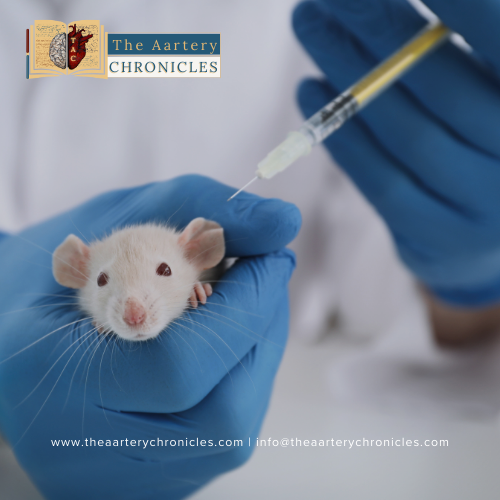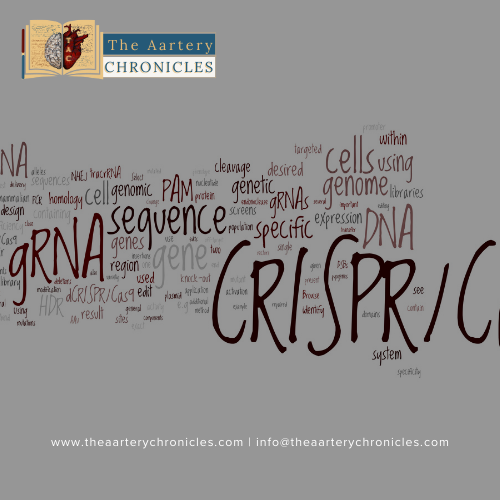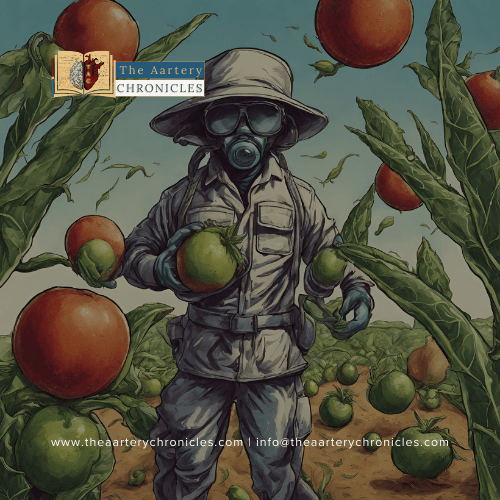
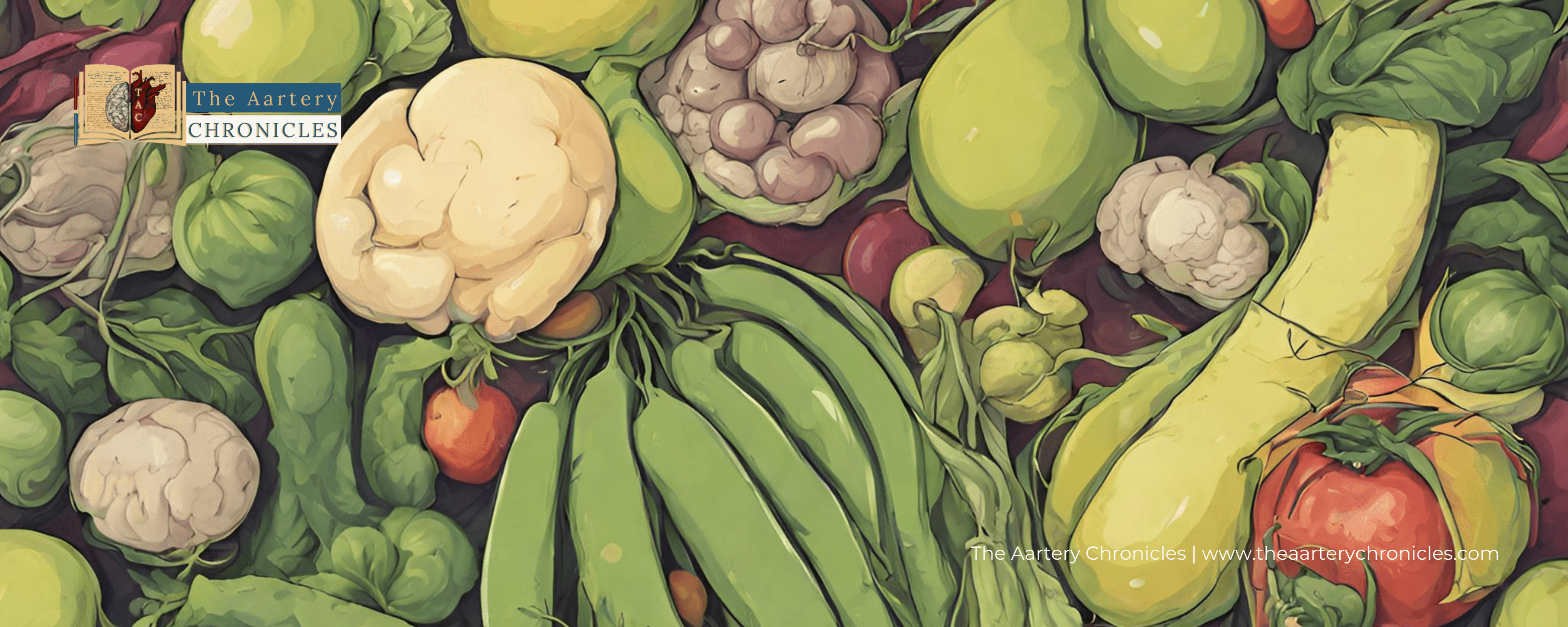
Genetically Modified Organisms (GMO)
Genetically modified organisms or GMOs can be defined as organisms in which the genetic makeup is altered using technologies such as genetic engineering, mating, or natural recombination. Most of the time, these techniques involve adding, deleting, or replacing specific gene/genes.
Genetically Modified Crops:
Scientists have been working on developing genetically modified organisms which are also known as transgenic plants/animals.
FDA-sourced literature reveals that in 2020, 94% of the soybeans planted were genetically modified organisms (GMO), 96% of the cotton grown was GMO, and 92% of the maize planted was GMO. In 2013, GMO sugar beets made up 99.9% of all harvested sugar beets while GMO canola accounted for 95% of canola planted in the USA.
Transgenic crop products are utilized in generating ingredients such as corn syrup, granulated sugar, soyabean oil, cornstarch, etc.
What is the need for making GM crops?
These modified crops called GM crops or animal varieties usually possess specific features. These are modified to meet certain specific requirements such as:
- Typically including enhanced protein, starch, or fat quality.
- Boosting vitamin and nutrient content
- Get rid of anti-nutrient factors
- Enhancing the flavour and taste
How to make GM crops?
DNA of cells is changed by introducing genes from other plants which have desired characteristics. In the case of plant varieties, the common techniques that are used for modification are Agrobacterium-mediated transformation, Direct DNA transfer, and plant virus vectors for gene delivery.
Examples of Genetically modified crops:
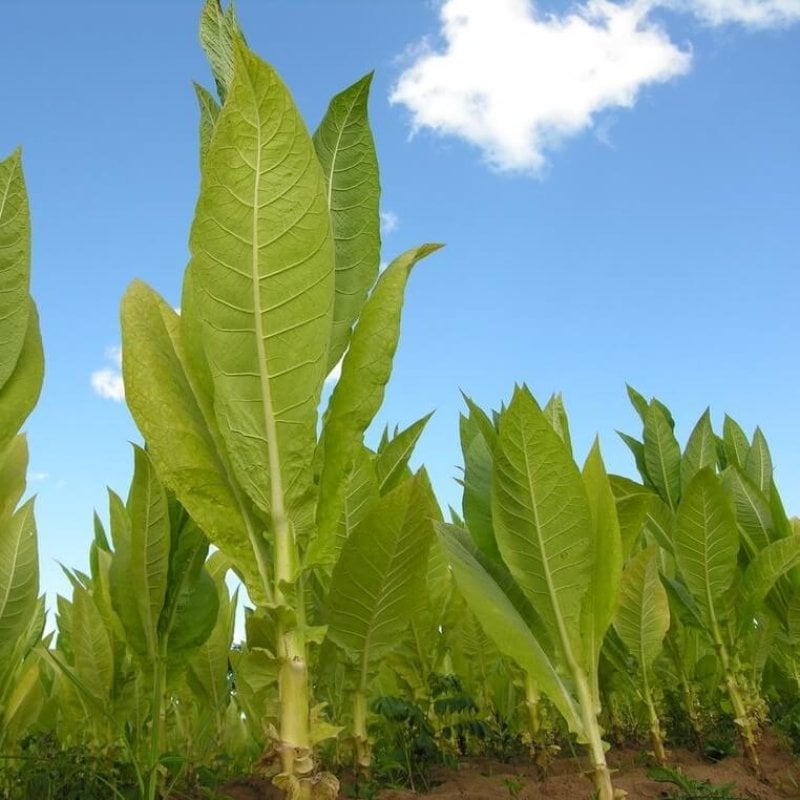
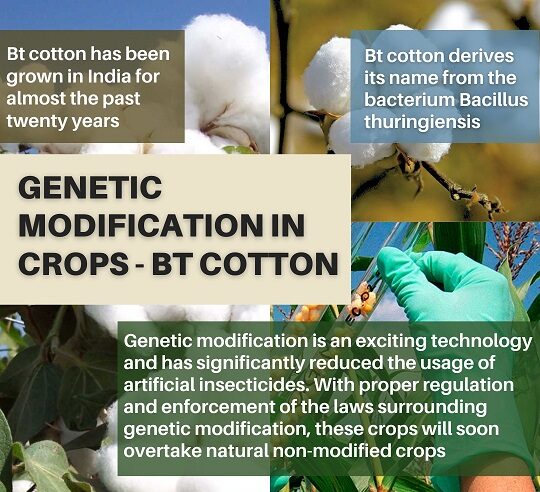
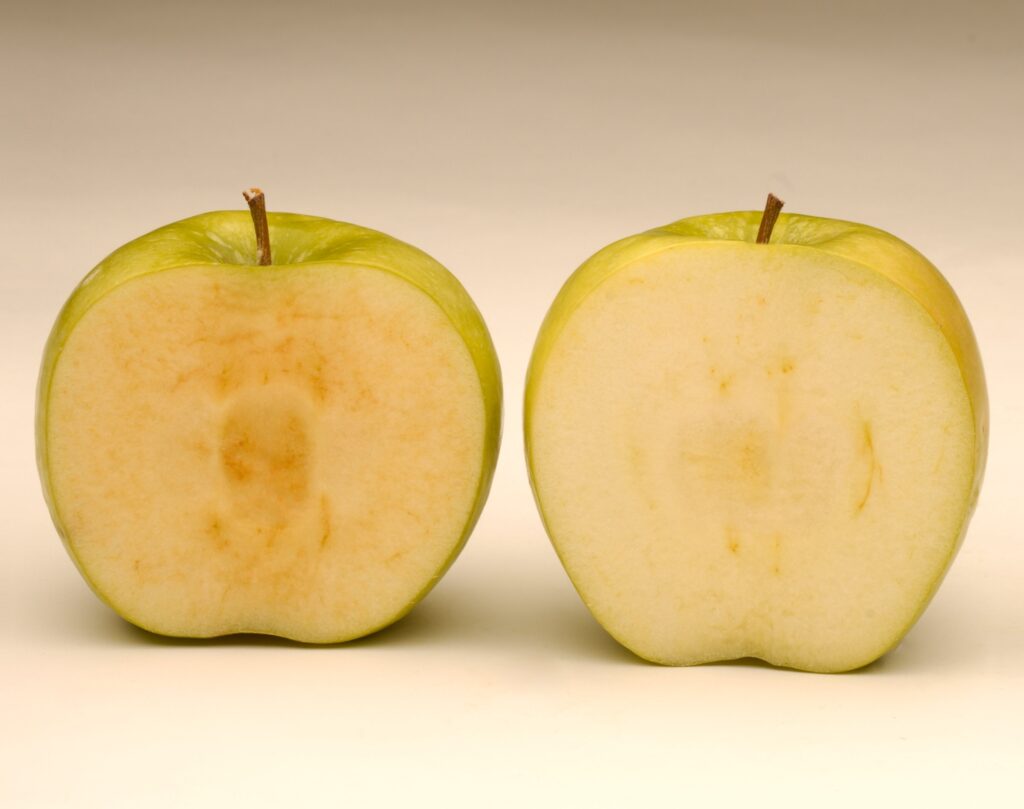
The tobacco plant was the first genetically modified crop produced in the year 1982 which was resistant to antibiotics. Later on, experiments related to genetic and chromosomal modifications gave rise to many new ranges of GM plants, organisms, fruit, and flower varieties that carried significant value in many aspects including commercial and health benefits.
The first commercially introduced transgenic crop in India was Bt Cotton. It is the only GM crop that is approved for commercial cultivation in India and ranks 5th globally in its cultivation. This variety gained commercial value as it was pest-resistant. This specific variety of Bt Cotton contained a foreign gene from the bacterium Bacillus thuringiensis, which enabled the plant to secrete crystal insecticidal protein or Cry protein causing it to become resistant to pests.
Corn: Transgenic corn was generated to resist pests. Bt corn is a transgenic corn that generates proteins that are harmful to pests but do not affect humans and other animals.
Potato: Transgenic potatoes were created to reduce browning that usually occurs during packaging and transportation. The newly developed variety also helped reduce pest attacks.
Papaya: In the year 1990 Papaya crop was destroyed due to the ringspot virus disease in Hawaii. Hence transgenic papaya variety known as the Rainbow papaya was created to help combat this virus.
Apart from these, some other transgenic crop varieties are transgenic apples, alfalfa, sugar beet, and Pink pineapples which contained increased levels of lycopene causing the pineapples to turn out pink in colour.
Genetically modified Organisms:
The first transgenic animal that was ever created was mice. Transgenic mice were predominantly used as models for research on various diseases. Transgenic animals have helped us understand gene function concerning the susceptibility of diseases, and their progression, and help the development of therapeutic solutions for diseases. Transgenic mice are of immense importance when it comes to studying diseases, is that the mice mimic the human body closely.
In the year 1997, Rosie, the first transgenic cow was created. This cow produced milk that contained human lactalbumin at 2.4 grams per litre. This milk was proved to be more balanced nutritionally than any other bovine milk. The gene responsible for human protein alpha-lactalbumin was introduced in the species causing it to produce protein-enriched milk.
Genetically modified farm animals are engineered focusing on aspects such as improvement in traits that are of commercial importance, quality of meat, the composition of milk, lactation and survival, growth rate, and decrease in allergens. It is said that transgenic salmon is probably going to enter the US market soon. This particular engineered species of Salmon would carry high-level endogenous growth hormone resulting in faster growth and increased feed efficiency.
Advantages and Disadvantages of GMOs
Advantages of GMO:
With the technologies such as chromosomal and genetic engineering, genes required for the synthesis of a particular protein, a drug of interest can be introduced into another species or an organism which will result in the production of a large amount of the drug. Transgenic goats are being used in the production of numerous monoclonal antibodies via mammary glands. Transgenic cattle are found to can produce a recombinant bispecific antibody in their blood.
One of the major advantages of the technology of genetic engineering is the low-cost value as compared to mammalian cell culture.
Apart from this, issues such as social, ethical, and legal must be taken into consideration when working on these specific research areas.
Disadvantagesof GMO:
As our potential to modify genes has been well established, however, we are not yet certain about the control of gene expressions. When it comes to experimenting with genetic materials and the transfer of genes the risk of generating near toxins or viruses is always there. Viruses in animal ecosystems through genetic engineering could pose a grave risk.
For GM food products and crops, along with enhanced agronomic features and improved consumer advantages, potential allergenicity cannot be denied.
Considering all the aspects, genetic engineering is a boon for society but whether or not humans should indulge in GM foods is sceptical.
- Zhang C, Wohlhueter R, Zhang H. Genetically modified foods: A critical review of their promise and problems. Food Science and Human Wellness. 2016 Sep 1;5(3):116-23.
- Fincham JR, Ravetz JR. Genetically engineered organisms: benefits and risks. Open University Press; 1991.
- Taylor SL, Hefle SL. Will genetically modified foods be allergenic?. Journal of Allergy and Clinical Immunology. 2001 May 1;107(5):765-71.
- Azadi H, Taheri F, Ghazali S, Moghaddam SM, Siamian N, Goli I, Choobchian S, Pour M, Özgüven AI, Janečková K, Sklenička P. Genetically modified crops in developing countries: Savior or traitor?. Journal of Cleaner Production. 2022 Oct 15;371:133296.
- Shakweer WM, Krivoruchko AY, Dessouki SM, Khattab AA. A review of transgenic animal techniques and their applications. Journal of Genetic Engineering and Biotechnology. 2023 Dec;21(1):1-4.
- Santora LC, Stanley K, Krull IS, Grant K. Characterization of maleuric acid derivatives on transgenic human monoclonal antibody due to post‐secretional modifications in goat milk. Biomedical chromatography. 2006 Sep;20(9):843-56.
- Wang J, Yang P, Tang B, Sun X, Zhang R, Guo C, Gong G, Liu Y, Li R, Zhang L, Dai Y. Expression and characterization of bioactive recombinant human α-lactalbumin in the milk of transgenic cloned cows. Journal of dairy science. 2008 Dec 1;91(12):4466-76.
- Naranjo SE. Impacts of Bt transgenic cotton on integrated pest management. Journal of agricultural and food chemistry. 2011 Jun 8;59(11):5842-51.

Author: Sanika Pande

